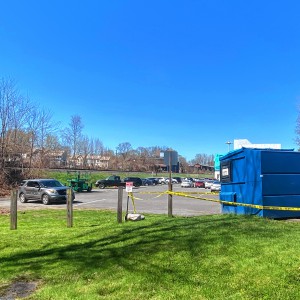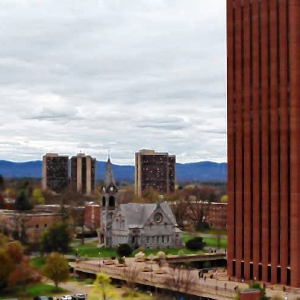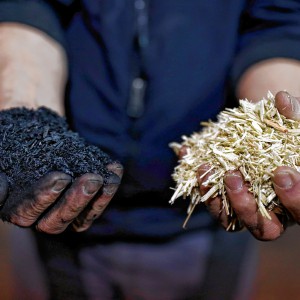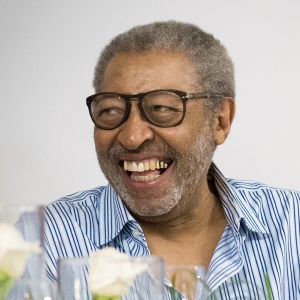Unearthing clues: UMass class teaches students the science of buried bones
| Published: 06-25-2023 10:09 AM |
AMHERST — Nested within a thickly wooded area behind UMass Amherst’s School of Education, a group of college students stand hunched over the soil in a fenced area, looking for bones.
Using small 4½-inch trowels, the students slowly scrape the dirt across a cordoned-off patch of land they’ve identified as being suspicious. Scraping horizontally across the surface, layers are dug up centimeters at a time — a lengthy but necessary means of excavating when trying to look for human remains.
“If you go to court, you need to be precise,” said Tabitha Dorshorst, a Ph.D. student helping to oversee the operation. “It’s a meticulous process.”
The students aren’t looking for real bones, only plastic ones — it’s part of the UMass Anthropology Department’s Bioarchaeology and Forensic Anthropology Field School. The intensive six-week course draws students from across the country, teaching them how to identify where remains may be buried, and how to identify humans based on the bones they leave behind.
“What we do is create two pseudo-burials,” said Ventura Perez, an associate professor at the university’s anthropology department who instructs the students. “Their final exam is going to be to build a site for next year’s students, so they reverse-engineer it. That’s what makes this course so unique, they’re creating the sites, excavating the sites, they’re doing all the paperwork that an actual principal investigator would do.”
On this particular day, students arrived at the site at about 8:30 a.m., tasked with finding the test areas where the bones have been buried and given very little clue as to where those are. The students quickly canvassed the area for signs. Different layers of soil have different colors of dirt, so seeing them mixed together on the surface is a strong indicator that something has been dug up and buried in that location.
“We started with our initial search to look for surface artifacts, anything above the leaves,” said Zoe Nechin, a student from Grinnell College in Iowa who joined the program after a recommendation from one of her professors. “Then we lifted all the leaf litter so that we could see the topography of the soil, and from there we were able to more clearly see changes in the soil or depressions or mounds.”
The skills the students learn in the course are equally applicable in two different fields. The first is bioarchaeology, when remains of humans from many years ago are discovered, triggering an archaeological dig. These kinds of discoveries can occur, for example, when a corporation is doing construction work on previously undisturbed ground for a new building.
Article continues after...
Yesterday's Most Read Articles
The second is forensic anthropology. Here the work is done in the service of the courts, and the site is not an archeological dig but a crime scene. The students must also log every instance of whenever someone exits or enters the scene, and mark at what exact depth remains were found, information that would be sent to the courts following the excavation.
Split into two groups, the students excavated separate sites: One a crime scene and another an archeological site.
“We photographed all the evidence we could see — we found some shotgun casings, we found a bullet lodged in the tree,” said Arianna Taft, a UMass student assigned to work with the forensic group. “We went around the entirety of the crime scene to see if there were any identifiable features where there might be some test pits we could put in.”
Though the motives behind the dig are different, the process for uncovering them is the same. After the students complete the dig, they’ll head back to the lab, where they’ll trade the plastic bones for real ones, which they’ll analyze to determine the person’s age, sex, and ancestry. Then they’ll write up mock reports, done differently depending on which burial they worked on. The bioarchaeology team will write one to go to the State Historic Preservation Officer; the forensic team will write one for the courts.
“We have a really high percentage of students getting into graduate school, either Ph.D., med school, or law,” Perez said. “One of the reasons is because we allow the students to write the reports. That’s a skill set they don’t normally get.”
For Nechin, who comes from a family of medical professionals, the idea of being able to extract personal information from bones, including information missing from historical records, is what draws her to the field.
“I found a very deep interest in the human body, more specifically, people and the stories we tell and how we tell them,” Nechin said. “The documentary evidence that we may have might differ from what we find in the ground. What are people’s real bodies telling us that the historical record isn’t? That’s pretty much where my interest comes from.”
Alexander MacDougall can be reached at amacdougall@gazettenet.com.

 Authorities ID victim in Greenfield slaying
Authorities ID victim in Greenfield slaying  Federal probe targets UMass response to anti-Arab incidents
Federal probe targets UMass response to anti-Arab incidents Locking up carbon for good: Easthampton inventor’s CO2 removal system turns biomass into biochar
Locking up carbon for good: Easthampton inventor’s CO2 removal system turns biomass into biochar William Strickland, a longtime civil rights activist, scholar and friend of Malcolm X, has died
William Strickland, a longtime civil rights activist, scholar and friend of Malcolm X, has died
